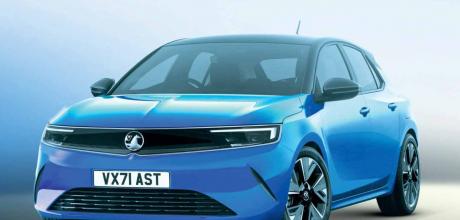2022 Vauxhall Astra - all-new hatch – and we’ve driven it
Vauxhall primes all-new Astra. Transformed family car receives Peugeot platform, latest tech and PHEV option.
The Astra, consistently one of Vauxhall’s best-selling models, will soon enter its sixth generation, bringing a new Stellantis-engineered platform, a striking new look and a plug-in hybrid powertrain.
The adoption of the modular, multi-brand EMP2 architecture is a significant shift for Vauxhall, netting greater economies of scale through increased material procurement and component sharing. Highlighting this, the new Astra has been developed alongside Peugeot’s new 308.
Bold design (as predicted by Drives.Today above), including Vauxhall’s new Vizor front end, will bring the Astra into line with the new Mokka and refreshed Grandland SUVs, while a change in profile will distance it from the current car: the bonnet is much flatter and the windscreen less heavily raked. The plunging roofline – a design element long established on the Astra – remains, although the tailgate is more upright than before.
There are also new optional Intellilux LED headlights, larger wheelhouses and new badges at the rear, including ‘Astra’ spelled out across the width of the new plastic bootlid. At 4374mm long, 1860mm wide and 1470mm tall, the new Astra is 4mm longer, 5mm wider and 15mm lower than its predecessor. Plus, its wheelbase has grown by 13mm to 2675mm.
These are subtle increases that Vauxhall claims provide greater cabin space and increased boot capacity, the latter of which is up by 52 litres to 422 litres, thanks in part to a new adjustable floor layout made possible by the EMP2 platform. The width of the boot has also increased by 19mm to 1020mm.
The dashboard remains fully cloaked for now, but we expect a similar set-up to that seen in the Mokka, with Vauxhall’s new Pure Panel treatment bringing two free-standing digital displays – one for the instruments and one for the touchscreen infotainment system – and a thick-rimmed multifunction steering wheel. Both Apple CarPlay and Android Auto are standard for UK buyers, plus they can specify a head-up display. The new platform also gives the Astra a more advanced electrical architecture and with it updated driver assistance functions, including adaptive cruise control, lane-keeping assistance, long-range blindspot detection, rear cross-traffic alert and a 360deg parking camera. Vauxhall plans to offer three different powertrains from the outset, all shared with the new 308.
The conventional options are a turbocharged 1.2-litre three-cylinder petrol engine with 108bhp or 128bhp and a 1.5-litre four-cylinder diesel making 128bhp. Both come mated to a standard six-speed manual gearbox or an optional eight-speed automatic.
Of greater significance, though, is the availability of a plug-in hybrid powertrain for the first time. As in the Grandland, it offers either a 148bhp or 178bhp turbocharged 1.6-litre four-cylinder petrol engine running in combination with a 109bhp gearbox-mounted electric motor for respective combined outputs of 178bhp and 222bhp.
Both Astra PHEV variants get an eight-speed automatic gearbox and a 12.4kWh lithium ion battery for an expected electric-only range of 31 miles. The Astra’s suspension is a development of that used by its predecessor. There’s the combination of MacPherson struts up front and a torsionbeam set-up at the rear on the petrol and diesel models, while the PHEV gets a multi-link rear arrangement. This is a passive set-up that goes without the option of adaptive damping, as offered by various rivals. Vauxhall said a lot of work was focused on the front end to give the new model the sort of roll stiffness for which the Astra has been renowned in recent generations. The steering has also been made more direct, with a 15:1 ratio in place of the current Astra’s 16:1 ratio. “The goal was to retain the reassuring linearity of the steering we have today but with greater response,” said vehicle dynamics boss Andreas Holl. “We don’t want a go-kart, but we’ve tuned it to provide a more responsive feel.”
Although the steering system is largely shared with that of the 308, the Astra gets unique tuning and its own specific dampers. The EMP2 platform also brings a 14% increase in torsional rigidity over the old Astra’s General Motors developed underpinnings.
“We have done a lot of simulation work to give it the sort of front-end stiffness that we consider crucial to our particular chassis tuning and the way we like to set up our cars with greater roll stiffness [than Citroën and Peugeot],” explained Holl. “We started off with the EMP structure, but the extent of the changes means it could be considered a whole new platform.”
UK sales of the Mk6 Astra in hatchback form are set to get under way in October, with the estate due shortly after. Opel’s base in Rüsselsheim, Germany, will build the models along with one other, yet to be confirmed Stellantis factory. While pricing for the new Astra has yet to be revealed, an entry point just below £20,000 is expected.
The extent of the changes means it could be considered a new platform
Suspension varies between petrol, diesel and plug-in hybrid cars.
New proportions are matched with Vizor front seen on Mokka


